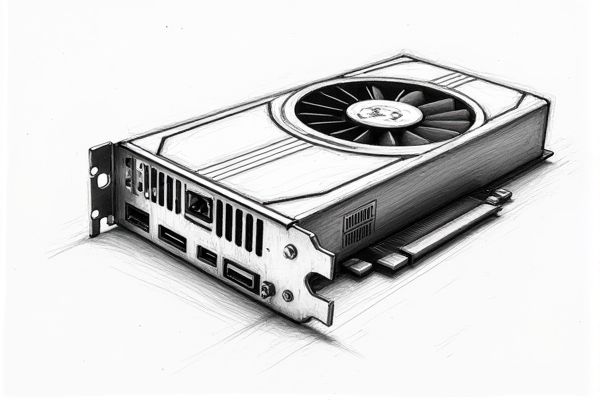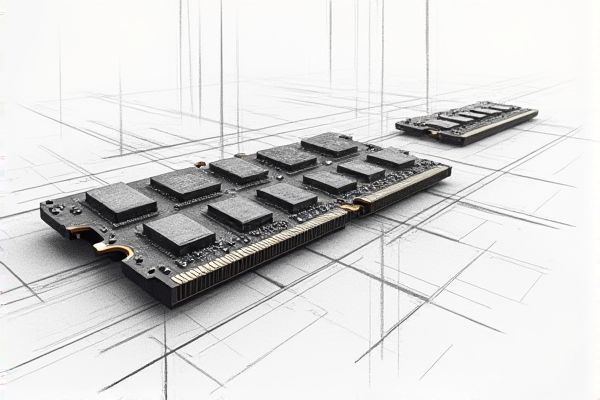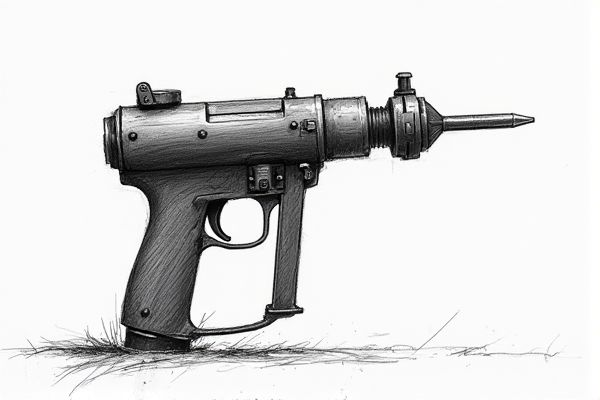As the demand for high-performance gaming and professional graphics workloads continues to grow, selecting the right video card has become essential for both gamers and creatives. Leading the market in innovation and reliability are several renowned brands known for their cutting-edge technology and superior graphics solutions. Nvidia and AMD consistently top the list, offering a wide range of GPUs that cater to varied needs and budgets, while other manufacturers like ASUS and MSI provide robust custom designs. Curious to find out which other brands make the cut? Explore the insights below.

Illustration of video card
Best brands of video card in 2025
NVIDIA
Nvidia has solidified its position as the leading producer of video cards, capturing an impressive 88% of the desktop graphics card market in Q1 2024, a significant increase from the 80% share in the previous quarter. This dominance is further highlighted by Nvidia's 98% market share in the data center GPU market in 2023, with shipments totaling 3.76 million units. The company's revenue grew by 126% in 2023, reaching $60.9 billion, and its market capitalization hit $3 trillion. Nvidia's Compute and Networking segment has become its top revenue generator, with a 215% increase in revenue from FY 2023 to FY 2024. The company's innovative GPU technologies, including the RTX series, continue to drive its market leadership. For further details on this market phenomenon, visit the coverage on TechRadar.
AMD
AMD, although facing challenges, remains a significant player in the video card market. As of Q1 2024, AMD holds a 12% market share in the desktop discrete GPU market, a figure that has seen fluctuations over the years, such as a peak of 31.08% in Q4 2019 and a low of 17% in Q4 2020. Despite the current market share, AMD is focusing on gaining ground in the mainstream and performance segments with its RDNA architectures, avoiding the low-margin enthusiast segment. AMD's GPUs, such as the Radeon RX 5500 XT and the RX 6000 series, have shown competitive performance and value. However, the company faces stiff competition from Nvidia, which dominates the market with an 88% share as of Q1 2024. For more insights on AMD's strategic retreat from the enthusiast GPU segment to focus on gaining market share, visit TechPowerUp's detailed analysis.
ASUS
ASUS is a leading manufacturer in the computer hardware industry, particularly renowned for its high-performance video cards. In 2023, ASUS shipped 20.7 million PCs globally, showcasing its significant presence in the market. The company's gaming GPU segment, including the TUF Gaming and ROG brands, has seen enhancements such as the update to GDDR6X memory for the GeForce RTX 3060 Ti in 2022, enhancing performance for PC DIY builders. ASUS holds a notable market share in the PC industry, with a 7.9% global market share of PC unit shipments in the third quarter of 2024. Its innovative products, such as the ROG Ally handheld device, further solidify its position in the gaming hardware market.
MSI
MSI is a leading brand in the gaming and eSports industry, renowned for its innovative and high-performance video cards. As an AIB (Add-in-Board) partner, MSI collaborates with major GPU manufacturers like NVIDIA and AMD to produce top-tier graphics cards. In the current market, NVIDIA dominates with an 88% market share, while AMD holds around 12%, and MSI plays a crucial role in delivering these GPUs to consumers. MSI's commitment to design breakthroughs, technological innovation, and extreme performance has made it a trusted name among gamers. The company has also sponsored over 20 eSports teams worldwide and hosts the prestigious MSI MGA (Masters Gaming Arena) tournament.
Gigabyte
Gigabyte, although not the market leader in GPU manufacturing, is a reputable brand known for producing high-quality video cards, often utilizing GPUs from leading manufacturers like Nvidia and AMD. In the context of the GPU market, Nvidia dominates with an 88% market share as of Q1 2024, while AMD holds 12%, and Intel's presence is negligible. Gigabyte's products are recognized for their performance, stability, and innovative features, making them a popular choice among consumers. The company's commitment to delivering complete IT solutions, including a wide range of PC components, enhances its reputation in the industry. Gigabyte's motherboards and peripherals are also highly regarded for their quality and reliability.
EVGA
EVGA, a renowned brand in the graphics card industry, has been a leading producer of high-quality video cards, particularly as an Nvidia-only GPU/AIB partner for 22 years. With a significant market share of 40% in North America, EVGA was the largest AIB supplier of Nvidia GPU-based boards in the region. Known for its innovative cooling systems, such as the highly efficient cooler for Nvidia's GeForce MX 440, EVGA has consistently delivered top-tier products, including the award-winning RTX 3090 series. Despite its decision to end its relationship with Nvidia, EVGA continues to support its existing Nvidia-based AIBs and maintains other product lines like power supplies. The company's commitment to quality and customer service has made it a favorite among gamers and content creators. For more information on EVGA's transition, refer to the article EVGA won't offer Nvidia's next-gen series.
Zotac
Zotac, although not the market leader, is a reputable brand in the video card industry, known for its high-quality graphics cards. However, it does not dominate the market share, which is largely held by Nvidia with an 88% share as of Q2 2024, while AMD holds around 12%. Zotac's products, such as the GTX 1050 Ti, are popular among gamers and users looking for reliable performance. Despite some user reports of issues with RMA units, Zotac's brand image remains strong among enthusiasts. The company continues to produce a range of graphics cards that cater to different user needs.
Sapphire
Sapphire Technology is renowned as the largest supplier of AMD-based video cards globally, founded in 2001 and headquartered in Hong Kong. The company has made significant milestones, including being the first to release a video card with an HDMI connector and the first to achieve a clock speed of 1000 MHz (1 GHz) with the Sapphire Atomic Edition HD 4890. Sapphire's products are built on AMD graphics processing units and Intel motherboard chipset technology, with manufacturing facilities in Dongguan, China, capable of producing 1.8 million video cards monthly. The company's commitment to innovation and quality has solidified its position in the market, where AMD holds a 12% market share in the discrete GPU market, with Sapphire being a key contributor. For more detailed information, you can visit Sapphire Technology's Wikipedia page.
XFX
XFX is renowned as one of the top producers of high-performance video cards, particularly with their AMD Radeon series. In Q4 of 2023, AMD, whose GPUs are often manufactured by XFX, saw a significant market share increase to 19%, up from 17% in Q3 and a substantial 7% rise from Q4 2022. The XFX Radeon RX 7900 GRE, powered by AMD's RDNA 3 architecture, features 16GB of GDDR6 memory, advanced raytracing, and AI accelerators, making it a top choice for gamers and streamers. This model supports up to 8K 165Hz displays and includes features like AMD Infinity Cache and Radeon Super Resolution for enhanced performance. With a 3-year warranty and dual BIOS options, XFX ensures reliability and flexibility for its users.
PowerColor
PowerColor is renowned as one of the top producers of high-performance video cards, particularly notable for its AMD Radeon series. The brand has gained acclaim for its innovative cooling solutions, such as the Liquid Devil series, which offers enhanced GPU performance with lower power consumption and higher clock speeds. For instance, the PowerColor RX 7900 XTX Hellhound Spectral White features a triple fan cooler and a 17-phase VRM, making it a solid choice for gamers seeking reliable and powerful graphics cards. In the market, PowerColor's products often compete closely with Nvidia's offerings, such as the RTX 4080, in terms of rasterization performance and pricing. Despite Nvidia's dominant 88% market share in Q1 2024, PowerColor's focus on mid-range and high-end segments keeps it a significant player.
















Leave a Reply
Your email address will not be published.